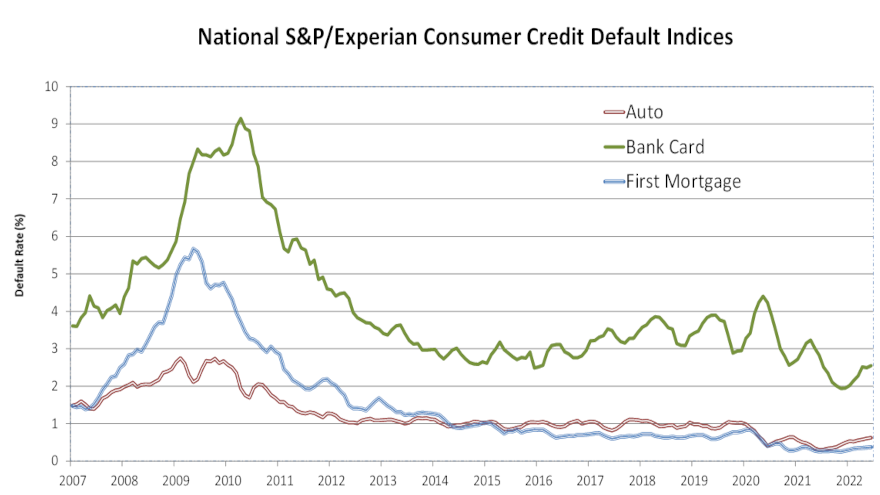Auto defaults now sit 32 basis points higher than all-time low

Chart courtesy of S&P Dow Jones Indices and Experian.
Perhaps your portfolio is experiencing a bit more turbulence, but overall auto defaults are just 32 basis points higher than the all-time low set a year ago.
That metric surfaced on Tuesday when S&P Dow Jones Indices and Experian released data through June for the S&P/Experian Consumer Credit Default Indices.
The auto default rate for June came in at 0.62%. Again, that’s 32 basis points higher than the all-time low of 0.30% recorded during the same month last year.
Despite increases during 11 of the past 12 months, the latest reading still is below the measurements the industry saw before the pandemic. According to the S&P Dow Jones Indices and Experian database going back a decade, the auto default rate stayed above 0.82% every month between May 2012 and February 2020.
The highest point during that stretch? It came in September 2013 when analysts reported the rate at 1.15%.
Elsewhere in the newest update, S&P Dow Jones Indices and Experian reported that the composite rate — which represents a comprehensive measure of changes in consumer credit defaults — ticked up 2 basis points to 0.53%.
Analysts said the bank card default rate climbed 6 basis points to 2.55%, while the first mortgage default rate also moved up 2 basis points to 0.38%.
Looking at the information by geography, analysts indicated four of the five largest metropolitan areas generated higher default rates in June compared to previous month.
Miami posted the largest increase, jumping 15 basis points to 0.99%.
Chicago and Dallas each moved 5 basis points, to 0.58% and 0.57% respectively.
Los Angeles ticked up 1 basis point to 0.46%.
Meanwhile, New York dropped 6 basis points to 0.71%.
Jointly developed by S&P Indices and Experian, analysts noted the S&P/Experian Consumer Credit Default Indices are published monthly with the intent to accurately track the default experience of consumer balances in four key loan categories: auto, bankcard, first mortgage lien and second mortgage lien.
The indices are calculated based on data extracted from Experian’s consumer credit database. This database is populated with individual consumer loan and payment data submitted by lenders to Experian every month.
Experian’s base of data contributors includes leading banks and mortgage companies and covers approximately $11 trillion in outstanding loans sourced from 11,500 lenders.


